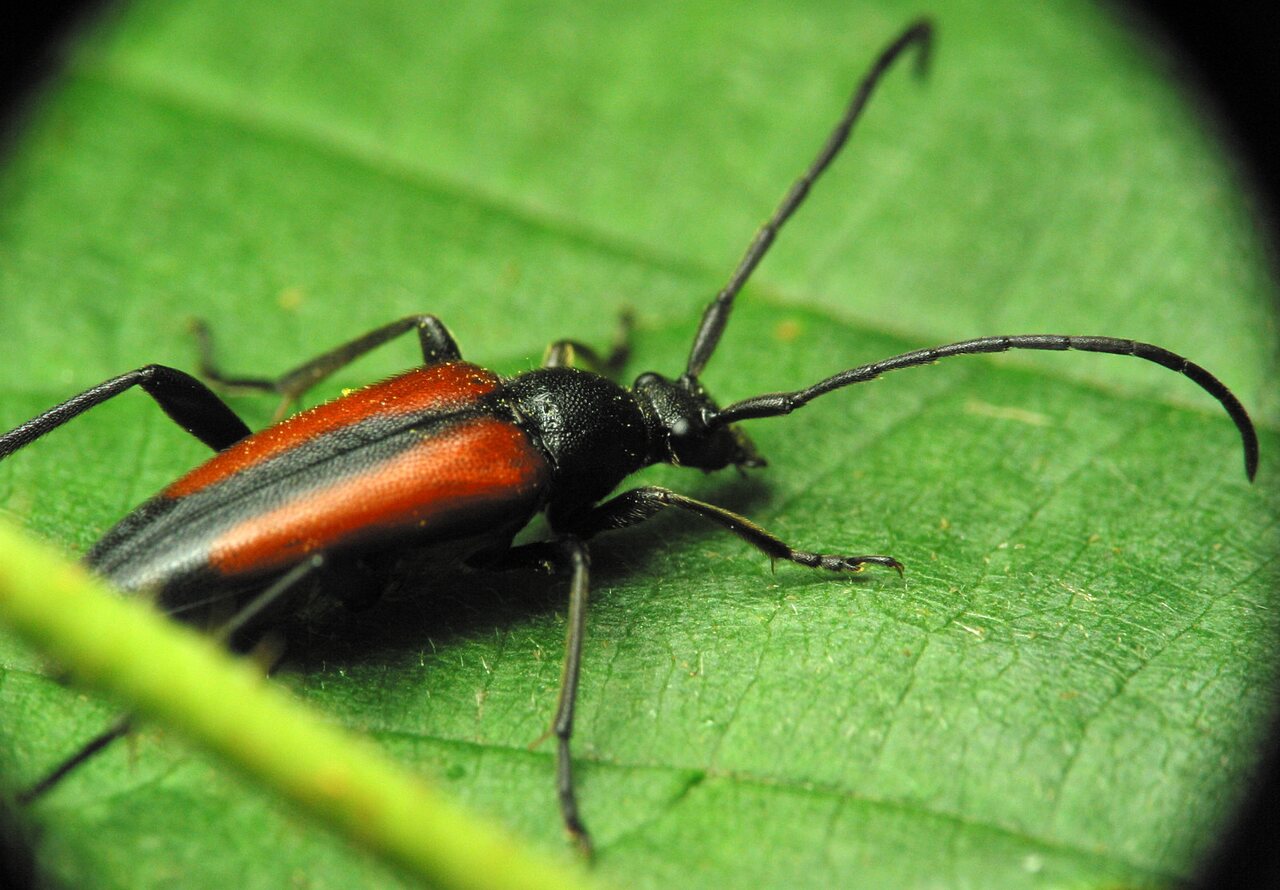
Stenurella melanura female · juodasiūlis grakštenis ♀
- Leptura melanura
- Black-striped Longhorn Beetle
- Kleiner Schmalbock, Gemeiner Schmalbock, Schwarzschwänziger Schmalbock
- juodasiūlis grakštenis, dviveidė leptura
- Strangalia czarniawa
Females oviposit among bark crevices and in cracks in exposed wood of dead or dying trees, stumps or fallen timber, usually where it is damp, and they may move between sites as they do so, a wide range of both broadleaf and coniferous trees have been recorded as hosts. Larvae develop within thin dead twigs, branches and surface roots, they generally feed on decaying or crumbly and slightly damp wood; smaller larvae feed under bark while larger larvae tend to penetrate the xylem, producing long galleries parallel to the axis, they grow relatively slowly and development may be extended over two summers if necessary. Fully grown larvae pupate in late spring or early summer in a cell near the surface of the xylem or under bark if this is present and adults eclose from April but generally remain in the pupal cell for a while and emerge in May or June.
Kūnas 6 - 9,5 mm ilgio, juodas. Patinų antsparniai rudai geltoni, siūlė ir viršūnė tamsios; patelių antsparniai raudoni, viršūnė ir plati juostelė išilgai siūlės juodos. Vabalai skraido gegužės – rūgpjūčio mėnesiais. Aptinkami ant įvairių augalų žiedų, taip pat ant įvairių lapų. Lervos vystosi lapuočių ir spygliuočių medžių džiūstančiose ir nudžiūvusiose šakose. Tai vienas iš dažniausiai aptinkamų Lietuvoje grakštenių.
Subfamily: Lepturinae · grakštenėnai
‥
0 comments
Add a comment